A historical look at International Day of Women and Girls in Science
It was 1966 when Roslyn Kerr (nee Uren), Elizabeth (Liz) Crawford and Jennifer Thompson became the first female trainees to join the then Department of Mines.
The 3 university students were offered employment during their holidays and 4 years of full-time work with the Geological Survey of NSW (GSNSW) after they graduated.
In 1968, when there were no female geologists working within field sections of the GSNSW, Roslyn Uren became the first woman trainee to graduate and begin full-time employment. However, Jeanette Adrian and Helena Basden worked in the newly formed Information and Publications Section as Principal Geologist and Editor respectively. Margaret Kaye (also a geologist), worked in Abstracting and Indexing, part of Information Section.
Now, the GSNSW boasts a diverse staff, and about one third of our staff are female, working in a range of roles from geologists and geophysicists to geospatial officers and a palaeontologist.
International Day of Women and Girls in Science is a day established by the United Nations to celebrate the vital contributions of women in science, technology, engineering, and mathematics (STEM).
As we celebrate this important day, we turn the spotlight on the women who over the decades have helped shape the geological landscape of NSW and beyond.
Meet some of the women (past and present) of the Geological Survey of NSW
Roslyn Kerr (nee Uren)
First women trainee geologists in the Geological Survey of NSW, Department of Mines 1966
In 1966, Jack Harrison, an enlightened and friendly geologist responsible for selecting trainee geologists, was keen for women to become trainees.
I was privileged to be included in the first group of women trainee geologists. Other women in this group were Elizabeth (Liz) Crawford and Jennifer Thompson.
I was entering in my second year at the University of Sydney. The department funded me to complete my undergraduate BSc degree, majoring in geology. This traineeship gave me a book allowance, paid vacation employment and four years full time work (after I graduated) at the Geological Survey.
For my first year at university, I had won a Commonwealth Scholarship, which paid my university fees only, so the traineeship was a much better financial deal.
My father had encouraged me to apply for the traineeship, suggesting that employment as a female geologist would be very hard to find (who is going to employ a female geologist he said).
My geology teacher Arthur James Lambeth at Wenona School inspired me to continue studying geology at university and my mother supported my choice.
Trainees at the University of Sydney, Paul Ashley and Roslyn Uren 1966[
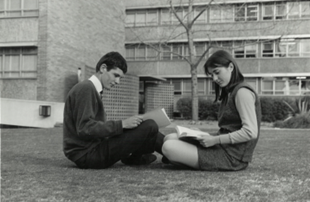
University vacation work
One highlight of a university summer vacation job was an amazing regional mapping trip of several days with Bill Chesnut for the Grafton 1:250,000 sheet.
Liz Crawford and I watched in awe as Bill interpreted outcrops from the Landrover 4WD of granite or basalt and faults. We then plotted them on aerial photographs.
Only a very short time was allocated to map a regional sheet. We enjoyed a lovely swim in the cool Mann River late one hot afternoon. Accommodation was in motels and dinner in pubs.
In the office prior to field mapping, aerial photographs were studied under a stereoscope in 3-dimensions to mark possible geological boundaries.
I remember Toby Rose setting me up with this gear and saying just ‘interpret’. I had not learnt anything about air photo interpretation at uni!
The Grafton sheet was published in 1976, and included my name as well as Liz’s as contributors (R.Uren, E.A. Crawford).
At a lunch with other retirees from the Survey held in Sydney in September 2024, Bill Chesnut said he put our names on the map so that we could share any mistakes. Good one Bill, so fair of him, he still has a great sense of humour in his 80s.
Another vacation job was spent at the Geological and Mining Museum in the Rocks, Sydney.
I was given petrological slides of unattractive altered rocks from the Nymagee area to study under the microscope and describe.
At uni, I was specialising in igneous and metamorphic petrology.
The museum was a fascinating place to explore, with displays of interesting rocks, minerals and fossils.
Huge boxes of rocks were stored downstairs in the basement.
Dick Sims cut thin sections of rocks for slides and was always eager for a yarn. John Wilson, the photographer had his studio there.
There was a feeling of freedom working in the museum.
Full time work as a graduate geologist
In 1968, when I started full time employment, the Geological Survey office had just moved from Loftus Street to the ADC Building, at 189-193 Kent Street, near the southern approach to the Sydney Harbour Bridge.
There were no women geologists in field sections. Jeanette Adrian and Helena Basden worked in the newly formed Information and Publications Section as Principal Geologist and Editor respectively. They had worked previously in the office of the Joint Coal Board, processing drilling data.
Another woman geologist, Margaret Kaye, worked in Abstracting and Indexing, part of the Information Section. She wrote abstracts of geological reports onto punch cards and used knitting needles to retrieve reports via the holes. Rather boring work. She soon joined a marine geophysical research cruise where she met her future husband, David Falvey.
Some male geologists did not like the idea of women doing full time field work.
Their objections were:
1. There were no facilities for women in the bush. Many field trips were to remote areas for a week or more, where camping was the only option.
2. What would my wife say if I took a woman to the bush?
On becoming a full-time employee, the Department of Mines gave me a ‘mushroom permit’.
The ‘mushroom permit’ given to me by the department
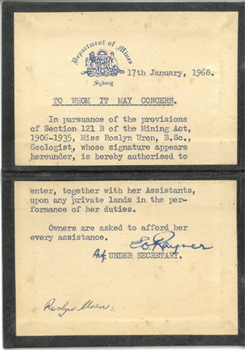
This card authorised me to access private land to perform my geological duties.
Land owners only owned the surface rights of their property. Under the Mining Act, they could not prevent you from collecting rock samples or carrying out mapping, for example.
Geologists always asked the land owner politely for access and explained what work would be carried out. But if the owner was not happy, we were entitled to contact the local police. Luckily, I did not need to do that.
As the first woman geologist to graduate via the trainee scheme, I became the first woman to be employed full time in a field section.
I was assigned to the Coal Section.
My first trip was to the Huntley drilling exploration area with Mal Bunny and Harry Bowman for 2 days.
On approaching the drilling rig in the Landrover 4WD, we stopped short of it while Mal walked ahead to inform the drillers that he had a woman on board (mind your language boys).
After logging drill core we went to the Robertson pub for beers and dinner. We camped the night in an old hut in Robertson.
I had several more trips to the area with Harry and others.
I obtained my learners permit and gained driving experience on country roads and potato paddocks in the Landrover. Double declutching was mastered. After almost 6 months in the Coal Section I was transferred to the Information and Publications Section where I answered public enquiries by mail, phone and visitors.
After more than a year in that section, I asked for a transfer.
My letter to hierarchy requesting a transfer
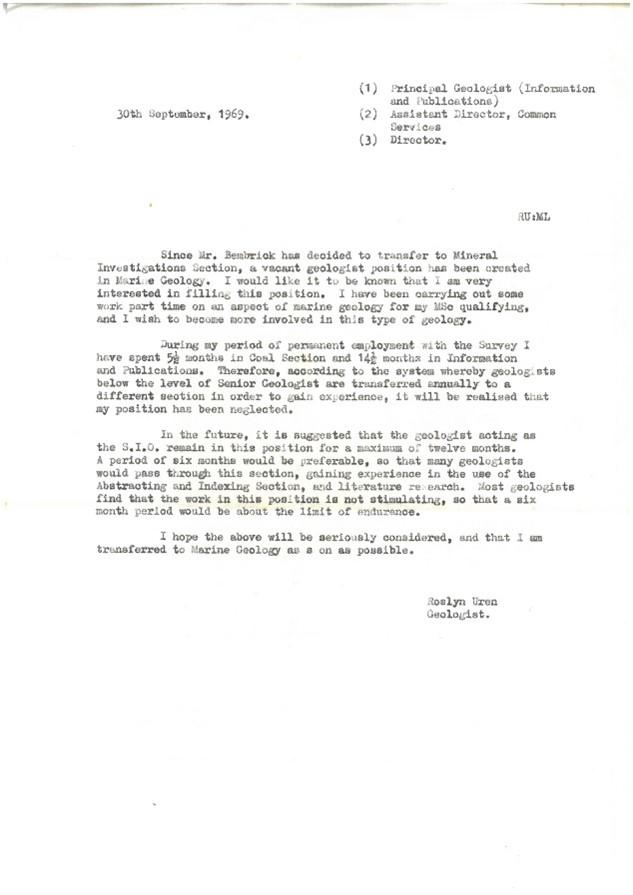
I had to assert myself to gain a long-term field position.
Don Nicholson ‘rescued’ me from the Information Section, offering me a position in the Non Metallics Section, which I held for many years.
Later, I moved back to the Coal Section.
I resigned from the Survey in 1980 after relocating to Newcastle, to pursue a Master of Science degree at the University of Newcastle.
With successive intakes of women trainees graduating, the field sections gained lots of women geologists.
During the mining boom of 1969, many of the men who did not want to work with women in the field left the Survey for more lucrative jobs in private industry.
Non-metallics section
My work in the Non Metallics Section comprised carrying out local and regional
assessments of deposits of kaolin, brick and pipe making clay and shale, construction and glass making sand, and hard rocks for gravel.
Except for kaolin and glass making sand, these materials are low-cost extractive resources. That means transport costs from the extraction site to where it will be used is the highest cost of the process. So geological and resource information was passed onto local and state authorities to assist in land use planning. It was hoped that town planners would zone areas of identified low-cost resources as potential future extraction sites, to prevent these resources being covered by housing estates, for example.
My larger studies were: Extractive Resources within the Newcastle & Port Stephens 1:100,000 sheet areas.
GS1973/029 (unpublished). I visited and described all the pits and quarries in this area, both operating and closed. A comment from a male quarry worker as I walked out of a clay pit ‘did you find any gold?’ A woman checking out rocks in a pit was certainly, a novelty. I also visited numerous brickworks.
The geology and low cost resources of the Gosford-Lake Macquarie area
GS1974/143, 2 volumes (unpublished). This report includes several geological
sheets that I mapped at 1:50,000 scale. Also a study of the origin of the mysterious red beds in the Narrabeen Group.
Kaolin in New South Wales, with Chris Baker. 1982 Mineral Resources 44
publication.
Coal section, second time
The largest project I worked on was the Denman/Scone Coal Drilling Program.
Cored drilling at 1km spacing was carried out to assess potential coal resources in the area.
Denman/Scone Coal Drilling Program, Stage 3a basic data report. GS1980/099
(unpublished).
I used detailed drill core logs from this program as the basis for my research Master of Science degree at Newcastle University.
The social aspects of work
Camaraderie in the Survey was an integral part of work in those days.
Birthdays were celebrated at morning teas, with the birthday boy or girl providing a cake to share with anyone who wished to join in.
Friday afternoon pub gatherings and retirement/send-off parties were popular.
Roslyn presenting a geological tie, made from a map, to Bill Foskett October 1976
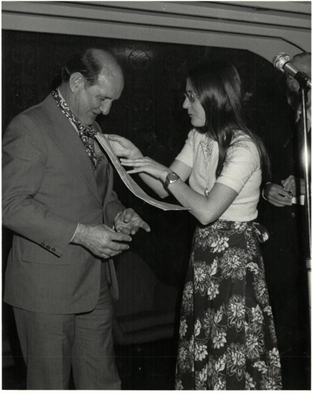
The highlight of the Survey social calendar was an annual Christmas musical review created by Don Nicholson and Carl Weber, with skits on bosses, and featuring staff as actors, dancers and musicians.
I enjoyed having a part in the shows, such as Ge-Odyssey and the Really Horrible Rock Show.
Retirees from this era still meet twice a year for lunch in Sydney.
As well as geologists, the Survey had a huge typing pool of women and a Cartography Section of men and women.
Many employees met their partner while working for the Survey.
Astrid Carlton
Astrid is a Principal Geophysicist who started working with the GSNSW in 2007.
Astrid’s interest in science and geology started when she was about 10 years old.
“I had an interest in the natural world and loved technology. I loved exploring and discovering new things. I remember marvelling over pretty rocks I was given or that I found in places that I probably wasn’t supposed to be in! One of my earliest fossil finds was at the Leyland Brothers World, on the Pacific Hwy. I was there on a wet and miserable family scout camp. It rained the whole time. As I explored the camping grounds, I noticed all the roads were littered with crinoids. As I explored further, I came across their private quarry which they used to make their road base. The quarry was a treasure trove! It was densely packed with fossils on top of more fossils. I couldn’t understand why anyone would use fossils as road base, what a waste. If I’d had a shovel or could have figured out how to start the excavator, I would have gotten some extraordinary samples! I remember walking around picking up fossils and ogling at ones that were still stuck in the ground. My pockets were filled with fossils. And my tent with mud.”
Smartphones were a new invention when Astrid started with the GSNSW 18 years ago, she was still using paper maps and the odometer on her 4WD to navigate outback NSW.
Now, Astrid’s role puts her at the forefront of geophysical innovations in Australia.
Astrid works primarily on conducting regional geophysical surveys. In between surveys she works on GSNSW’s vast databases and mapping projects. When she first started at GSNSW she spent most of her time interpreting geophysical imagery, making maps and modelling data.
“I am passionate about acquiring geophysical data. This type of data helps geoscientists ‘see’ rocks deep beneath Earth’s surface. GSNSW has multiple missions such as acquiring, storing and providing geoscientific knowledge. The geophysical data we acquire feeds into our regional mapping projects, which improves our knowledge of the geology of NSW. We use our data to make images, that we merge to form a statewide image, which is considered essential for exploration by explorers. And we make all our geophysical data publicly available, which is one of our main missions.”
Astrid’s passion is evident when asked what she enjoys about her role. “My current role offers me the opportunity to work on epic sized, technologically advanced geophysical surveys. The data we acquire is world-class and mind blowing. We image NSW’s surface and subsurface in ways that most people would assume is science fiction”.
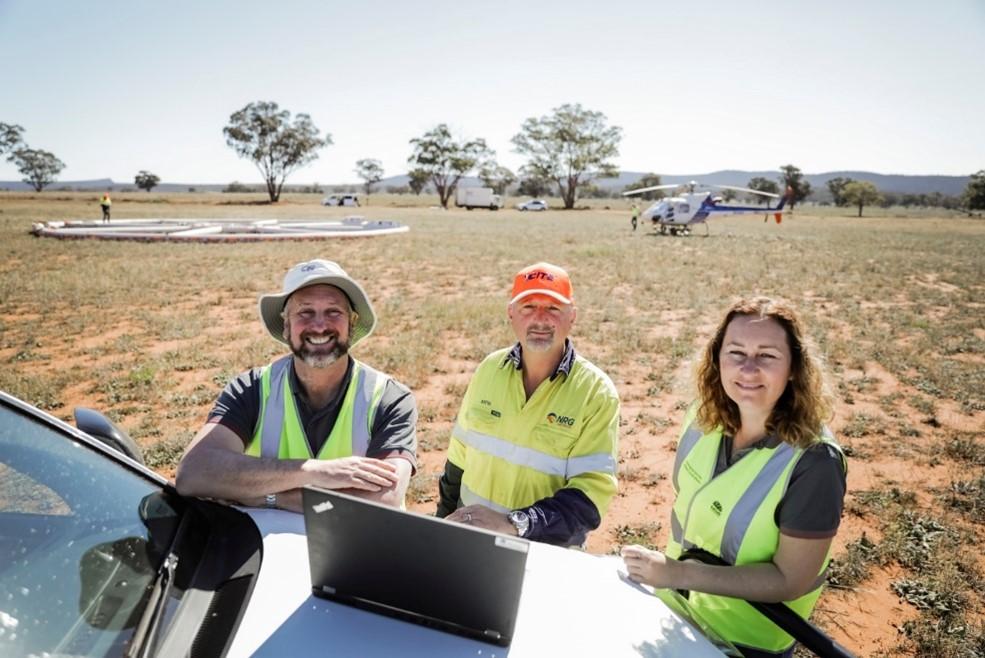
Larissa Gammidge
Larissa first joined the then Department of Mineral Resources as a coal Geologist in 1996.
Larissa joined the GSNSW because “you have the whole state and so many different types of resources and rock types to work with and explore. You are not limited to the small footprint of a mine. There are many types of geoscientist roles in GSNSW.”
Larissa always knew she wanted to be a geologist because of her passion to understand how the world works and what it is made of. Her favourite television program, The Curiosity Show, encouraged kids to experiment and ask questions. Larissa was always conducting her own experiments and even made her own ‘laboratory’ when she was only 7 or 8 years old.
Affectionately known as ‘Larry’, Larissa was given the nickname as a student when “the guys thought I needed a more blokey name.”
Throughout her time at the department Larry has worked in a range of roles, including with Coal Advice, developing a database of coal boreholes, and supporting the Coal Innovation, CO2 Storage Assessment Program. Now, Larry is a geoscientist within the Projects & Acquisitions team.
Currently Larry’s main job is to provide geological information, raw data, and geological interpretations. This involves a lot of time at the computer and time in the field.
“The field experiences have varied tremendously over time. The emphasis on safety and improvements in technology and communication has made fieldwork better and easier.
The software and computer hardware available to us now is unbelievable. Computing power when I started was limited. Software for geology was limited and very clunky to use. Anything complicated had to be used on unix workstations which required lots of command line instructions. The internet was not really in existence. The library was crucial, books, hardcopy journal articles and maps were the major sources of information. In the 1990s I had to input data into a computer from a card catalogue.
There have been major changes in the types of resources I have worked with. I started back in the 1990s working on coal resources. When I returned in 2011, I worked primarily on CO2 storage projects. Then I was moved to the petroleum and geothermal section. The last couple of years I have been working on a groundwater project, supporting geophysical acquisition and field mapping.”
In 2024 Larry was integral to the Bancannia water drilling project, facilitating the exploration for essential groundwater northeast of Broken Hill.
Larry says it is a project she will remember, “It was a fantastic collaboration with hydrogeologists from the Department of Climate Change, Energy, the Environment and Water. We worked and stayed on properties, sharing our knowledge and getting to know each other. It was a very diverse group of people working on the project. A great experience with challenges like weather events closing roads several times”.
Other achievements Larry is proud of includes:
- Presenting on the GSNSW’s work at various events: Exploration in the House, Petroleum Exploration Society of Australia and most recently at a Local Land Services workshop for landholders.
- Locating old drillholes from the 1960s onwards so their position is recorded accurately.
- Compiling data packages on all the geology of the Darling Basin, which involved validating data and putting it together in an accessible form with new models.
- Assisting with the decommissioning the Wyee Bay core storage facility.
- Volunteering over the years at National Science Week events at Newcastle Museum, the Hunter Region Botanic Gardens and Tocal field days to promote interest in geology and the work of GSNSW.
Larry describes GSNSW as innovative and proactive, “For example the Seamless geology maps, which have been followed by other jurisdictions. Our MinView system is world class, easy to use and so versatile. Displaying numerous resources and related spatial data. There are always projects on streamlining and modifying procedures alongside improvements in technology.”
When asked about a stand-out moment from her career with the public service, Larry recounts another drilling project: “Working on the large petroleum rig drilling in the Darling Basin. Poring over down-hole logs at 1am deciding on what depth to do further tests. It was an interesting experience living in the drill site camp, complete with gym and staffed kitchen, there was a large crew, all in the middle of nowhere”.
Excitingly, Larry says there is still more to achieve within GSNSW, “Additional economic resources can only be found if we keep increasing the geological knowledge of our state. We need to continue to acquire data. This is becoming increasingly difficult due to additional layers of procedures. Resource importance changes with time so we need to be mindful that we collect as much information as we can, we don’t know what will be important in the future.”
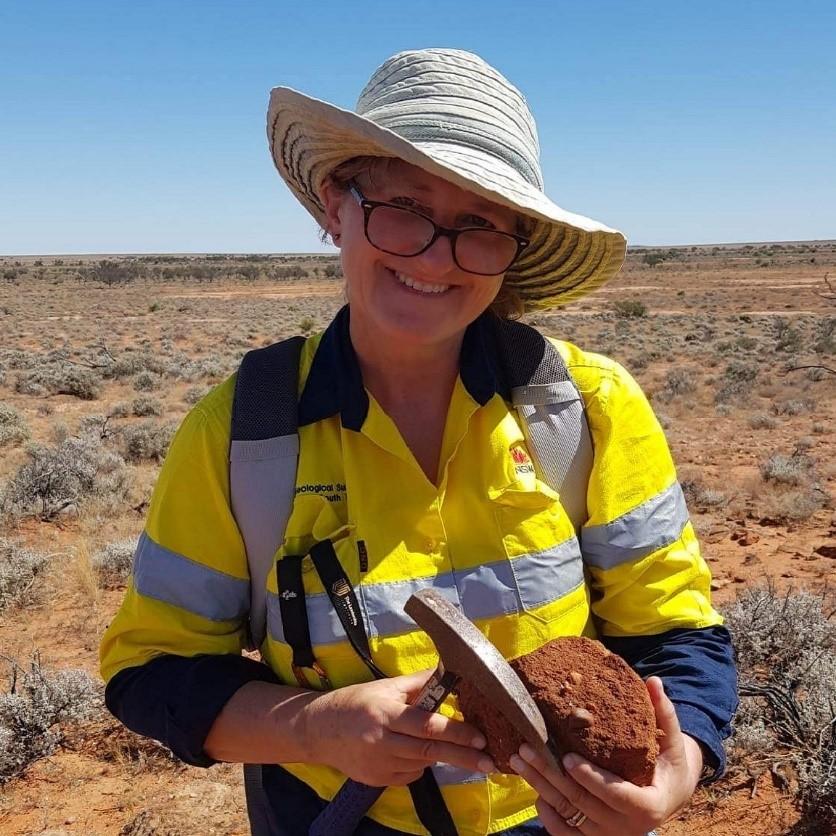
Simone Meakin
Simone first joined the Geological Survey of NSW (GSNSW) as a regional mapper in 1989 because it offered a career with a scope that combined industry and academia.
After progressing through a range of roles within GSNSW, including editor, manager and acting Director, Simone is now a project officer who helps support geophysical survey and drilling programs, with a focus on liaising with stakeholders.
Simone’s interest in science began when she was just 4 years old, reading books about fossils, volcanoes, and earthquakes. When asked what made her pursue a career in STEM, Simone says: “I had an affinity for science, a love of the natural world and saw it as a challenge to enter a male-dominated industry.”
Achievements Simone is most proud of include receiving a University of Adelaide medal for an Honour thesis on fossil pollen, working (commonly alone) in the field for several years completing numerous mapping projects (and never having an accident!), sparking her son’s interest in geoscience, and authoring or editing a whopping 100 publications.
Simone says, while there is still work to be done, the way the industry respects women in scientific roles has improved over time.
“When I started, female geologists were uncommon and a subject of discussion. We felt like we had to prove our strength, resilience and general worth. Some males were uncomfortable working alongside us, or their partners didn’t like it. Interestingly, a couple of mines in WA preferred to employ women, as they were hard working and better behaved! By the 1990s, women were dominating the volcanology scene in Australia.”
Simone has highlighted the importance of outreach and inspiring the next generation to understand the contribution of geoscientists to society.
“I feel that the publications I’ve worked on are a legacy that future generations will consult to guide their work. People still use GSNSW publications from the 1880s, so hopefully mine will still be around in 2100 and beyond! I’ll also continue to talk up geology to kids and anyone else who will listen!”
Simone’s advice to other women looking to pursue a career in STEM: “Be yourself. Don’t expect to know everything when you start a job – you’ll learn through your experiences and mistakes.”
Simone says the most rewarding part of her career (so far) has been discovering fossils, minerals and spectacular outcrops; as well as seeing rocks that very few (if any) people have seen before and contributing to the knowledge about them and the general understanding of NSW geology. Also, geoscientists are great to have as colleagues and friends.
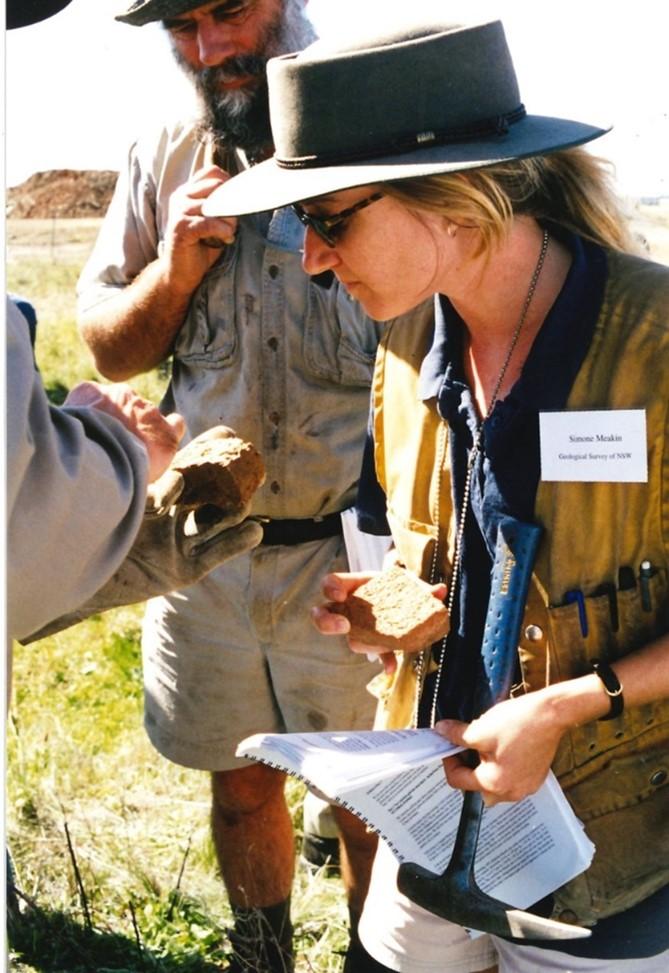
Nicolette Earle
Nicolette has worked with GSNSW for more than 5 years, starting in 2020.
Nicolette believes her interest in science and geology has “always been hidden in there somewhere” saying “I have fond memories as a child of my grandfather collecting interesting rocks on the property, and my great uncle a fossicker. He would come and stay with us and go fossicking with his detector and briefcase with his little vials of gold.
After 10 years in metalliferous mining the geology/geotechnical side of things got me thinking, I should be doing something more to understand this all, which lead to completing a Bachelor of Geoscience.”
Choosing to undertake study later in life, whilst working full-time, becoming a home owner/renovator and supporting family all at the same time. The distant dream of working for the GSNSW took commitment, a long time, and hard work to get to the now.”
Nicolette’s passion and determination has led to her current role providing timely advice to support optimal exploration and development of the state’s resources. Her role also includes evaluating and assessing mineral, coal, and petroleum titles for compliance with the Mining Act 1992 and the Petroleum (Onshore) Act 1991.
“The geological and geospatial assessments we conduct play a crucial role in supporting investment and ensuring the responsible development of the state’s mineral, petroleum, and energy resources. These assessments involve detailed analysis of geological formations, resource potential. By providing comprehensive data and insights, we help guide decision-making processes for exploration and development projects, ensuring they align with regulatory standards and sustainable practices.
“Working alongside such esteemed geological experts is an incredible honour. The chance to learn and keep expanding my knowledge is what truly captivates me. Plus, I have a genuine love for maps, rocks, and being outdoors with my boots on.”
Nicolette says GSNSW is a leader in the acquisition, curation and dissemination of geoscientific data, knowledge, and advice on the geology of NSW.
Nicolette says the future of geoscience is exciting, “The potential for groundbreaking discoveries, the integration of advanced technologies like AI, remote sensing, and big data analytics is transforming how we understand and interact with the Earth’s systems.
“I see myself contributing to this future by leveraging my expertise in exploration and mining and being part of GSNSW which has equipped me with the skills and knowledge to make meaningful contributions to these efforts.”
Gwen Stefani
Gwen has been working with GSNSW since 2016. Currently a coal geoscientist in Assessments and Advice – Resource Assessments, Gwen’s responsibilities include coal project assessments, operational allocation assessments, coal project and basin modelling, and project work. “While my initial focus was on modelling, my role has evolved to encompass a broader range of assessment tasks.”
Gwen says the GSNSW effectively provides valuable advice to both government and industry and produces high-quality, industry-standard geological products.
Gwen is passionate about data acquisition and modelling, which directly supports the GSNSW’s mission of providing expert advice and guidance to government and other agencies.
Gwen’s contributions to geoscience and the GSNSW are varied, her achievements include “the contributions to the Geothermal Project completed last year and the successful development of various geological models during my tenure.”
Gwen’s childhood was spent in Alice Springs, where she experienced the diverse and fascinating geology of the region, sparking an interest in the field. Gwen says her interest in science developed during high school, and she aspired to pursue a career that would allow her to apply her scientific knowledge. Gwen earned a Bachelor of Applied Science (Earth Science) from Ballarat University (now Federation University).
When asked about what strategies she has found helpful in navigating the professional challenges that women often face in STEM fields, Gwen says “Building strong professional relationships and seeking support from colleagues and mentors has been crucial. Recognising the importance of prioritising mental health and knowing when to disengage from challenging situations is also essential.”
Gwen says she is eager to see what the future brings for geoscience, “I am excited to explore the evolving role of AI and machine learning in geoscience and to continue developing my skills in advanced modelling techniques.”
Jola Jaworska
Jola first started with GSNSW when she began volunteering in July 2003; by November that year she was offered a paid position. She has been working with the Projects and Acquisition team since 2021.
Over the years Jola has been involved in diverse range of projects with the GSNSW. “We have just completed groundwater drilling in the Bancannia Trough I also work on stratigraphic unit descriptions for MinView and undertake field mapping. I frequently help with preparation for seismic survey or drilling operations. Since I started working for GSNSW, I have worked on coastal Quaternary geology, petroleum, geothermal and carbon dioxide storage assessment, geoscientific database compilations and data packaging. I also used to assess reports submitted by petroleum and geothermal companies. I have been employed as a junior geologist, senior geologist and I also had a 9-month stint as acting manager.”
Jola says she has always been interested in different aspects of earth sciences, “Once I was questioning my teacher in a primary school, why Australia is a continent and not an island? When I was in my early teenage years, I discovered that a construction site near my house was using small limestone blocks with ammonite prints. I used to go through the pile and take the best specimens home but that ended when I was discovered and chased off.”
There are a number of achievements Jola is proud of, but she says there is one standout. “Being key personnel in the Bancannia groundwater drilling project is the highlight of my career. Together with my manager John Davidson I was involved in all stages of the project from site scouting and selection through procurement and contract award to operations and close of the project. The project involved collaboration with hydrogeologists from DCCEEW, found water in deeper fractured aquifer northeast of Broken Hill and was awarded a NSW Resources Team Award late last year.”
Reflecting on her proud moments, Jola remarks: “being responsible for creating GIS data sets within the coastal Quaternary geology team was a great start of my career and I am very proud of it. Later, I developed a passion for data and project management. I have expanded very basic petroleum drilling database to the form it is in now, I have searched for and collected seismic survey data from different media and locations to a single location where it was easy to find and access. I have also developed statewide borehole temperature data sets for geothermal energy assessment, the first geothermal assessment done by GSNSW in the late 2000s.”
Jola says that data management and delivery has significantly improved since starting with the Survey. “to the point that now our online data discovery application (MinView) is one of the best in the world. I know that, because we frequently receive positive feedback, even from overseas. GSNSW strives to improve knowledge of NSW geology and resources and over the years has added assessment of new resources such as geothermal, hydrogen, critical minerals, deep groundwater to name just a few. GSNSW applies new technology as it develops to maximise efficiency of data collection and delivery. In addition, GSNSW employs passionate and dedicated geoscientist who are proud of their organisation.”
For Jola, fieldwork remains a passion. “I feel fieldwork and field mapping is something that cannot be replaced by any technology or remote sensing techniques and I am very passionate about it. Geophysical surveys are extremely valuable, but until you go to field to verify what you see on a computer screen, you will not know what is really out there. Field mapping is essential to improve geological knowledge of NSW and finding new resources.”
Jola says she is excited to see how science evolves into the future. “Today you have access to all available resources. Tomorrow something new and cutting edge comes through and you can redraw resource maps again. It appears that AI is going to rule the world from now on. But it can only access what is digitally available. Our role will be to provide digitised data for AI to harvest and ensure that the AI output is correct.”
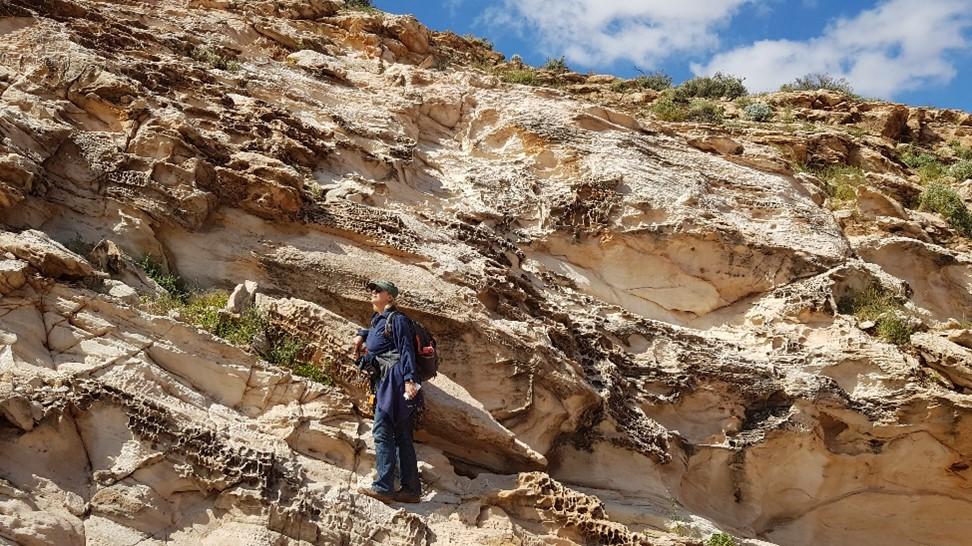
Liann Deyssing
Liann started with the GSNSW in 2007. Joining the GSNSW was a natural choice since geological mapping was something she enjoyed at university and still enjoys today. Describing it as “the challenge of trying to piece together an incomplete jigsaw puzzle together.”
She was aways interested in the world around her, which her mother, being a science teacher, always encouraged.
Her role is diverse, but can be described “primarily about integrating mapping, field data, geophysics, petrography, geochemistry, palaeontology, drill holes, previous studies, company exploration and modelling to produce geological interpretations.”
Liann is proud of all of her achievements from her work with the GSNSW. But of these, the one she feels will have the greatest impact is the NSW Seamless Geology Project. Where a team from the GSNSW developed a new statewide geological map, joining the best available mapping across the state. Creating a seamless geology map that now underpins future work in NSW. This was a paradigm shift in the way that maps are created and compiled, ensuring that scientists and the NSW public will always have the best-available geological maps at their fingertips.
Projects such as the NSW Seamless Geology are what Liann considers reflect what the GSNSW does well, which is to innovate, “as the GSNSW constantly works to improve our knowledge and data on NSW geology and how we deliver this to our clients”.
When asked what advice she would offer other women starting a career in STEM, Liann says, “Pursue something you enjoy, it makes the tough days at work easier. It’s also worth understanding what will be required for that career and if that fits with the life you want”.
Liann says the people she gets to meet and the opportunity to visit some amazing places both on and off the beaten track have been the most rewarding parts of her career. After all, being snowed on in the field is not something all Australia geologists experience.
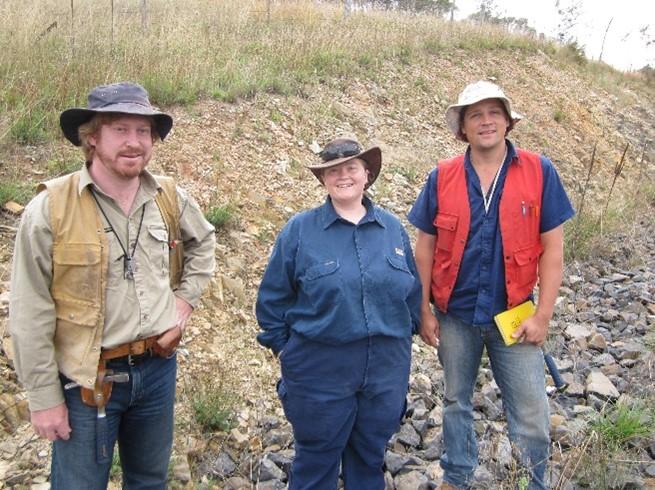
Rosemary Hegarty
Rosemary worked with the GSNSW between 2006-2017 and held various roles including Senior Geophysicist (geophysical interpretation and data integration for regional mapping in Lachlan Orogen and Broken Hill area), Acting Chief Geophysicist, and also managed collaborative Thomson Orogen projects (testing basement geology across NSW/Qld border).
Rosemary is proud of her work investigating concealed basement geology for large parts of NSW and seeing the Thomson Projects through to drill testing over many years, and the collaboration with other geologists in Geoscience Australia, Geological Survey of Queensland, and various universities.
Rosemary was also involved in supporting the next generation of geoscientists, supporting university students, I am proud of “being involved with many Honours student projects and having them all survive and join the profession, with great research outcomes.”
During Rosemary’s time at the Department, GSNSW shifted from paper publications to digital portals, “GSNSW staff really managed to be at the forefront of transitioning to statewide geology and online delivery.”
Rosemary says working collaboratively is something GSNSW does well, “for my years I was fortunate to have managers and executive who were committed, experienced and promoted achievement in the ranks. A real feeling of collaborative effort across the GSNSW group.
Our group managed to obtain funding and continue to upgrade geophysical coverage of NSW to build the datasets and keep opportunities coming in for the internal and external data users.”
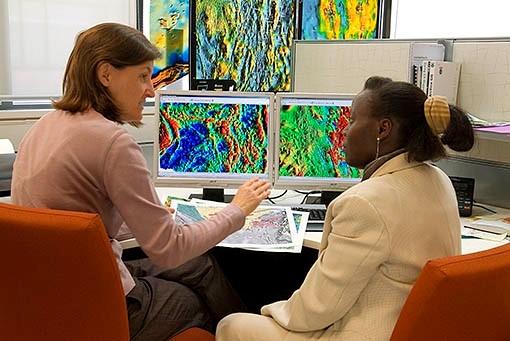
Helen Ray
Helen worked for the GNSNW between 1981 and 2004, her main duties included resource studies in industrial minerals, especially dimension stone, land use planning, geological mapping in the Sydney Basin and Murray Basin and, resource assessments in construction materials.
Helen is most proud of her work advising and supporting the industrial minerals industry, and especially the dimension stone industry, including advice on NSW and Commonwealth heritage sandstone projects. This included developing industrial minerals and dimension stone databases, reports and advice.
Helen says the work of the GSNSW is vital to the state of NSW, “the Survey’s primary focus was on regional mapping which was very well done. I also think we did a pretty good job in industrial minerals and land use planning, sometimes with limited resources. We provided valuable support to government, industry and the public.”
Yvette Poudjom Djomani
Yvette worked as a geophysicist within the GSNSW between 2006-2008. Yvette’s main roles included processing, filtering, modelling and interpretation of geophysical data to assist in the better understanding of the geology, tectonics and mineral systems of NSW.
Yvette is most proud of her work in collating magnetics and seismic data of solid geology of the Thomson-Lachlan orogen from gravity. Yvette was also involved in the development and implementation of the edge detection technique (worming) for structural interpretation.
Yvette says the GSNSW is great at collaborating within teams and interstate, “My work at the GSNSW opened new career opportunities for me. I experienced work in a government department, built on my network which was valuable in securing a job outside of the GSNSW.”